Health tracking apps and devices offer consumers the ability to track an increasing number of relevant metrics. Over the years a number of the companies behind them, especially the ones with larger user bases, have released their own insights based on interesting correlations in the data sets they've collected.
For example, just last week, Runkeeper Director of Marketing tweeted a link to a post titled “Android runners are male, Russian, goal-setting night owls.” But these sorts of data inights stories have been a staple for many years now.
In fact, Jawbone released so many data stories about its users in the last year that the company published a list of their favorite ones from 2105. In one post, on sleep, Jawbone reported that women sleep, on average, 20 minutes more than men. And in another, the company said people who commute to work sleep less than those who don’t.
MobiHealthNews compiled a list of data stories from half a dozen companies that have shared insights gleaned from their aggregate user data. Starting with a few from Jawbone:
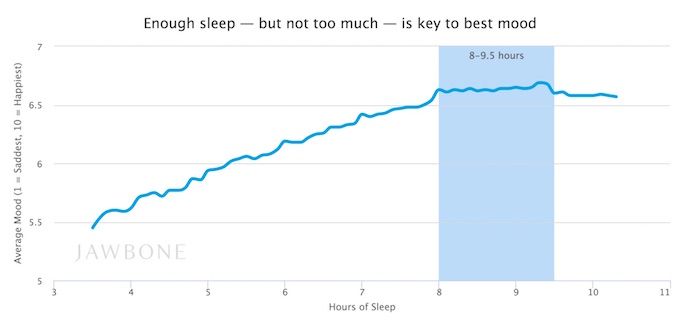
Happiness: People who get between 8 and 9.5 hours of sleep are happier than those who slept less or more than that. Jawbone also found the more steps people took one day, the better mood they recorded the next morning.
India: The average sleep time in India is about 6.5 hours. The city in that country that gets the most sleep is Goa, but this is also the city that clocks the most steps and stays up the latest.
Heart health: The resting heart rate for men is 3.4 beats lower on average than for females. Additionally, Jawbone users with a lower BMI have a lower resting heart rate. And users that track more steps also have a lower resting heart rate.
Mood, energy, and schedule: Users who work out in the morning had more a consistent workout schedule. And while those who work out more often are happier, people are generally more happy on the day they work out.
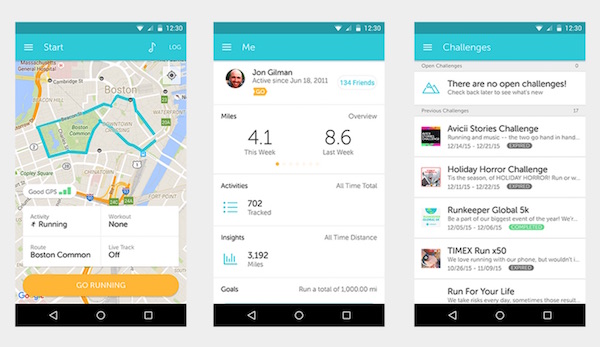
Android: Runkeeper’s Android community is most likely to go for runs between 5 pm and 6 pm and 16 percent more likely to work out go for a run between 5 pm and midnight than Runkeeper's iOS users were. This community is also 4 percent more likely to set goals in the app and 66 percent more likely to make walks their primary workout mode vs iOS users.
Lose It!
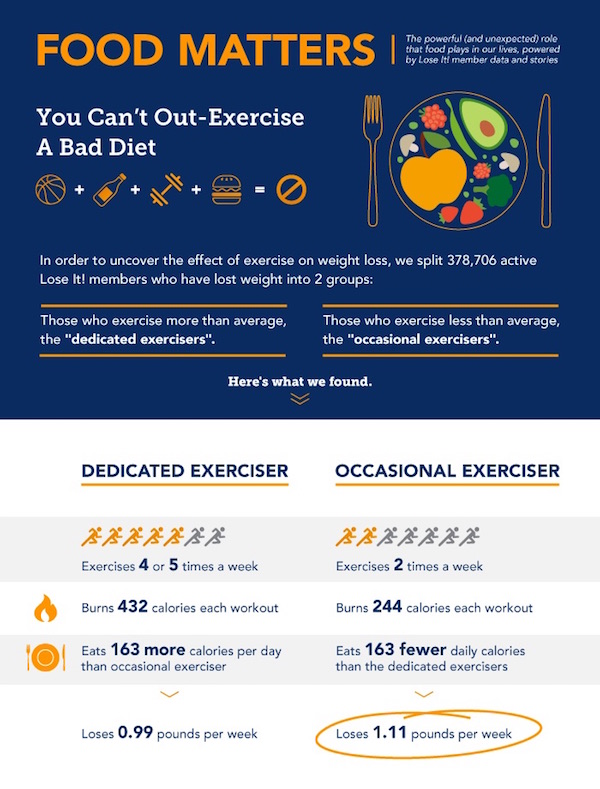
Pizza: Some 65 percent of Lose It! users who log pizza are men, while 35 percent are women, the company reported in October 2014. About one third of people who log pizza are between the ages of 25 and 35 years old. The most popular type of pizza users log is pepperoni, followed by cheese. And while 35 percent of pizza logged is for lunch, 54 percent is for dinner.
Diet v Exercise: Last year, in September, Lose It! found that a dedicated exerciser who works out four to five times a week, burns 432 calories each workout, and eats 163 calories more than the average occasional exerciser loses slightly less than one pound per week. While an occasional exerciser who exercises twice a week, burns 244 calories each workout, and eats 163 fewer calories than the average dedicated exerciser loses a slightly over one pound per week. Lose It suggests that this data indicates people cannot compensate for a bad diet with exercise and that both nutrition and fitness are important to health.
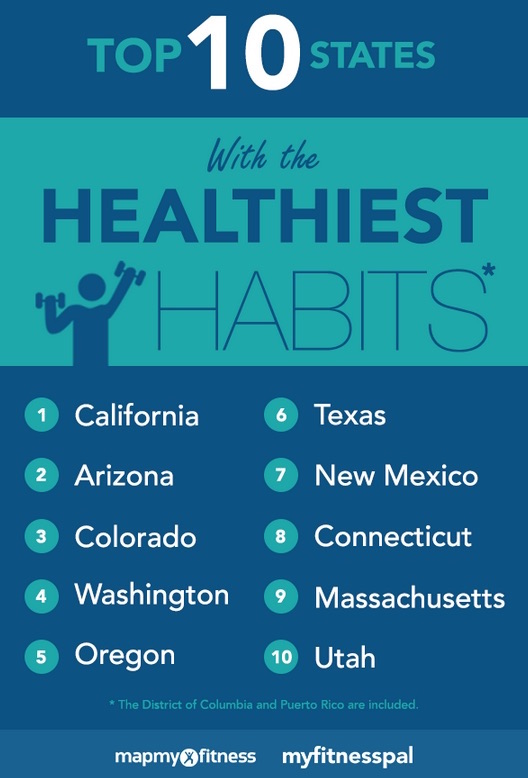
Healthy states: California’s MapMyFitness users have the healthiest habits, which the app maker determined by examining activity levels and nutritional choices among its many users. The next top spots went to Arizona, Colorado, Washington, and Oregon. The states with the unhealthiest habits include Wyoming, which bottomed out the list, with North Dakota, South Dakota, Washington DC, and Delaware rounding out the bottom five.
Glow
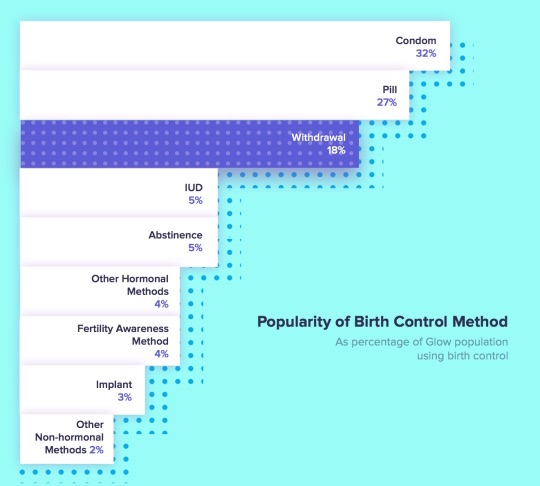
Fertility: Canada’s pregnancy rate is 21 percent higher than the overall average of Glow global users. Australia’s is also higher, but at 14 percent. Meanwhile, Latin America had a 12 percent lower pregnancy rate than the average, at 12 percent.
Peak happiness: During a woman’s cycle, her peak happiness is on days 15 and 16 after her period, according to Glow's data.
Birth control: Withdrawal is the third most popular form of birth control, Glow found. Some 18 percent of Glow users said they use withdrawal as their primary method of birth control. The two most popular were condoms at 32 percent and the pill at 27 percent. After withdrawal, 5 percent of Glow users reported IUD and another 5 percent reported abstinence as their primary birth control method.
Massive Health
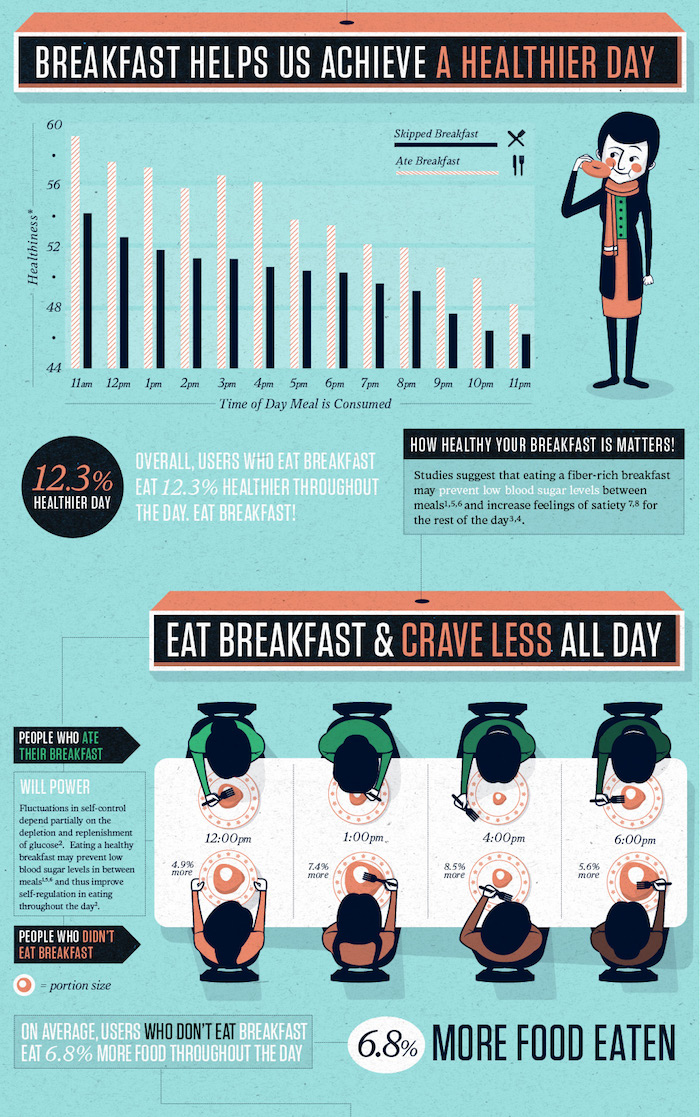
Food preferences. Here's a throwback: In 2012, Massive Health, which was acquired by Jawbone the following year, released data about users of its app, called The Eatery. The app's users who ate breakfast went on to eat 12.3 percent healthier diets throughout the day. Users in San Francisco ate 3.4 times as many cashews and 4.4 times as many brussel sprouts than the national average, the company reported. And app users in New York City ate 3.2 times more arugula and drank 6.7 times more coffee than the national average. The company also estimated that people ate 12.4 percent less healthy than they thought they did. And 72 percent of foods are rated healthier by the eater than by others.















